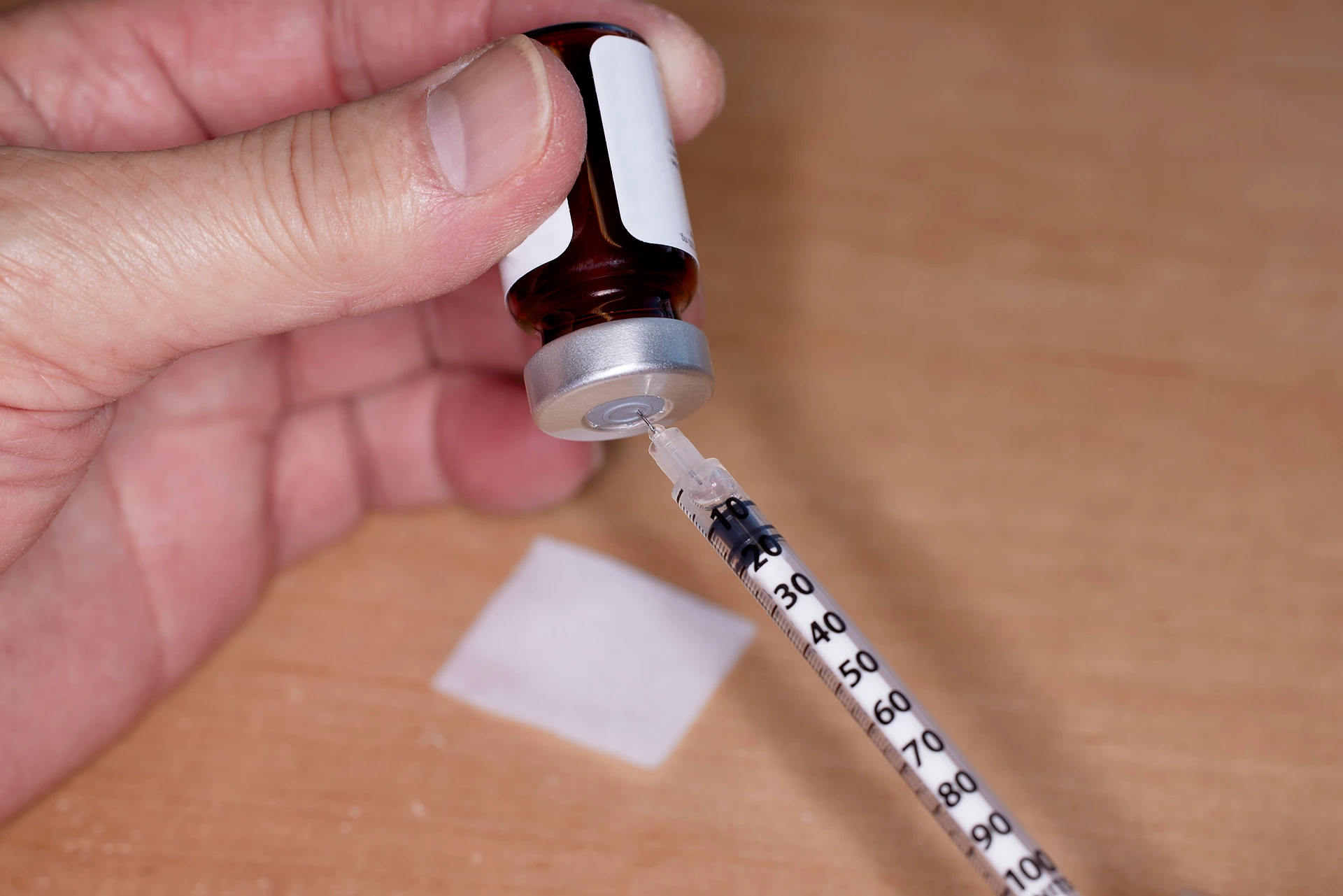Get the Facts on the Potential Risks Before Starting Testosterone Therapy
While testosterone replacement therapy can effectively treat hypogonadism, there are a number of potential side effects to be aware of. Monitoring and actively managing side effects is crucial for reducing health risks.
If you’ve been diagnosed with low testosterone, also known as hypogonadism, your healthcare provider may have suggested testosterone replacement therapy (TRT). While this treatment can help alleviate symptoms like fatigue, mood changes, and low libido, it also comes with potential side effects.
What Are Some Common Short-Term Side Effects?

When starting testosterone therapy, some men notice minor side effects that tend to occur early on in treatment. These usually go away after your body adjusts to the medications. Let’s look at some of the more common temporary side effects.
Acne and Oily Skin
One of the most frequently reported short-term effects is increased acne and oil production on the face, back, shoulders, and chest. This is due to testosterone’s effects on the skin’s oil glands. Keeping your skin clean and using over-the-counter medicated creams can help manage these symptoms.
Breast Swelling or Tenderness
Some men notice swelling or tenderness in their breasts soon after starting testosterone therapy. This is caused by a temporary imbalance between testosterone and estrogen levels. Using an aromatase inhibitor medication may help alleviate breast symptoms until your body adjusts.
Fluid Retention
Testosterone can cause the body to retain fluids initially, leading to puffiness or swollen ankles. Drinking plenty of water, reducing salt, and elevating your feet can provide relief. Diuretic medications may be prescribed if water retention persists.
Urination Changes
You may notice changes in your urinary patterns when beginning testosterone treatment. This could include needing to urinate frequently, trouble emptying the bladder fully, or dribbling after urination. These symptoms often improve as the body acclimates.
Mood Shifts
Some men report mood swings, irritability, or increased aggression in the first weeks of therapy as hormone levels regulate. Patience and open communication with loved ones can help smooth out emotional side effects. Your provider may adjust dosages if mood changes are severe.
Cholesterol Level Impacts
Testosterone therapy could cause levels of good cholesterol (HDL) to decrease and levels of bad cholesterol (LDL) to increase, at least temporarily. Your provider should monitor your cholesterol and may prescribe statins if you have heart disease risk factors.
Decreased Sperm Production
The testes may slowly reduce sperm production in response to testosterone therapy. This could reduce fertility, although production sometimes rebounds after treatment stops. Let your provider know if you plan to conceive, as they may advise suspending TRT.
While uncomfortable, short-term side effects often resolve within a few weeks to months as the body adjusts to treatment. However, some potentially serious health risks can also occur with testosterone therapy.
What Serious Health Risks Are Linked to This Treatment?

In addition to temporary side effects, a number of studies point to increased health risks associated with testosterone therapy. It’s important to discuss these with your provider when weighing treatment options.
Heart Disease Risks
Research indicates that testosterone therapy could raise the risk of cardiovascular problems in some patients. Men over 65 using testosterone gel developed more coronary artery plaque, which can lead to heart attacks. Older men and younger men with pre-existing heart disease also faced a greater risk of heart attack shortly after starting treatment.
As a result, the FDA now requires that testosterone product labels include warnings about the possibility of heart attacks, strokes, and related death in patients with heart conditions.
Blood Clots and Stroke
Studies have shown a possible connection between testosterone use and an increased likelihood of blood clots. This elevates the risk of pulmonary embolism and stroke, especially in older patients or those with prior clotting disorders. If you have risk factors for clotting, your provider will monitor you closely.
Prostate Effects
Testosterone therapy may worsen urinary symptoms associated with enlarged prostate (BPH). Those with prostate cancer should avoid testosterone, as it can accelerate disease progression. While studies are mixed, there is also some evidence that testosterone could increase prostate cancer risk.
Sleep Apnea
Men with obesity, chronic lung disease, or other breathing disorders are more likely to develop sleep apnea while on testosterone therapy. This treatment can worsen existing sleep apnea as well. Let your provider know if you have any signs of this disorder, such as snoring, fatigue, or cessation of breathing while sleeping.
What Are the Potential Long-Term Side Effects?
Testosterone therapy is designed for long-term use if needed to treat hypogonadism. However, extended use may increase the risk of additional side effects:
Cardiovascular Disease
The elevated risk of heart attack and stroke appears to be most significant early on in treatment. However, studies show long-term testosterone therapy may still produce negative cardiovascular effects, including death from heart attack. Talk to your doctor about your heart health before starting treatment.
Polycythemia
This condition, marked by increased red blood cell concentration, is an established side effect of prolonged testosterone use. Polycythemia can elevate blood viscosity, increasing the likelihood of clots. Your provider should regularly monitor your blood cell count.
Urinary Symptoms
Long-term testosterone use can cause the prostate to enlarge from prostate cell growth. This may worsen urinary symptoms such as reduced stream, hesitancy, and dribbling. Your healthcare team can recommend medications or procedures to improve urinary function if needed.
What Should Those Using Testosterone for Gender Transition Know?

When used for gender-affirming hormone therapy, testosterone also leads to some expected physical changes in addition to the side effects above:
- Increased muscle mass and strength
- Facial and body hair growth
- Cessation of menstrual periods
- Enlarged clitoris
- Vaginal dryness
- Deepened voice
- Fat redistribution for a more masculine look
There are also some unique risks to be aware of:
- High hematocrit – Testosterone therapy can raise red blood cell counts, requiring periodic blood donations to decrease hematocrit.
- Emotional fluctuations – Mood swings are common in the first few months. Communicating openly with loved ones can help smooth out these effects.
- Interactions with comorbidities – Testosterone can interact with migraine, psychiatric, cardiac, or metabolic disorders. Providers should closely monitor patients with these conditions.
Those using testosterone for gender transition should weigh the benefits of this therapy against potential side effects through an informed discussion with their care team. Ongoing monitoring and management of side effects are key.
What Does Recent Research Say About the Risks?
Some recent studies suggest the risks of serious cardiovascular events associated with testosterone therapy may be lower than previously thought. However, there are some newly identified risks to consider:
- A 2020 study found testosterone therapy does not significantly increase the risk of heart attack, stroke, or death compared to untreated patients. The highest risk occurred in the first 6 months of treatment.
- However, a 2021 study showed patients using testosterone therapy were more likely to develop atrial fibrillation and pulmonary embolism compared to untreated patients.
- More research is still needed to clarify the level of cardiovascular risk, which likely depends on dosage, treatment duration, and individual patient factors.
If your provider recommends testosterone therapy, discussing these latest study results could help inform your treatment decisions.
What Precautions Should Be Taken With This Treatment?

If you and your doctor decide testosterone therapy is appropriate, certain precautions should be implemented to reduce side effect risks:
- Avoid testosterone use if you have untreated severe sleep apnea or congestive heart failure, which this treatment may exacerbate.
- Testosterone is generally not recommended for patients with breast or prostate cancer, as it can fuel cancer growth.
- Have your hematocrit level checked before starting testosterone, as those with naturally high RBC counts may experience severe polycythemia.
- Undergo frequent cardiac assessments for signs of atherosclerosis, heart attack risk factors, and arrhythmias.
- Report any concerning neurological, cardiovascular, or dermatological symptoms promptly to your provider.
- Weigh your personalized risks against potential quality-of-life benefits. Testosterone therapy may help relieve debilitating hypogonadism symptoms for some despite side effect risks.
By carefully considering the pros and cons with your provider, you can make an informed decision about what is right for your health and wellbeing.

